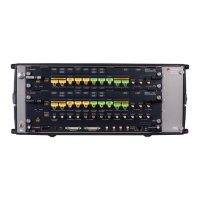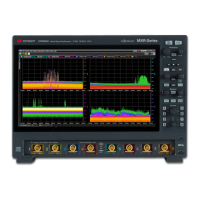M8000 Series of BER Test Solutions Tips for Preventing Damage 21
Tips for Preventing Damage 1
• Periodically check and clean the cooling vents of the instrument.
Inadequate air-flow can result in excessive operating temperatures,
which can lead to instrument failures. Refer to the product datasheet
for allowable operating temperature range.
Follow electrostatic discharge precautions
• Electrostatic discharge (ESD) can damage or destroy electronic
components. Whenever possible, conduct testing at a static-safe
workstation.
• Ensure grounded environment and personnel.
• Wear ESD suitable clothes and shoes.
• Keep static-generating materials e.g. plastic boxes, tape, PC mouse,
keyboard, etc. at least one meter away from all components.
• Damage of components by ESD can occur at voltages as low as 100 V.
• When testing a passive DUT, work on an ESD workstation or utilize an
air ionizer. Discharge the test point by using a probe directly grounded
to a primary earthing terminal.
• When testing an active (powered) DUT, be aware that the capacitors
can hold charges even after power is removed from the DUT. Voltage
on the board can exceed the maximum input level of the instrument
and transient voltage may occur from DUT. Utilize an inline attenuator
(e.g. 3 dB) to reduce the voltage entering the instrument.
Use Cable Discharger box to discharge cables
• Loose cables may hold an electrostatic charge. Before connecting any
cable to product connector, short the center and outer conductors of
the cable together to discharge any transient voltages that may be
present.
• You should use the cable discharger provided with the initial product
shipment and shown in the following figures.

